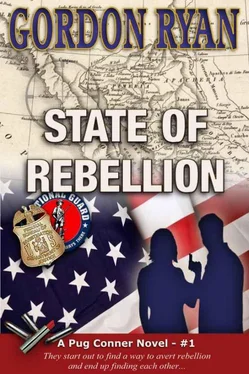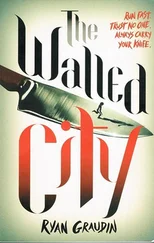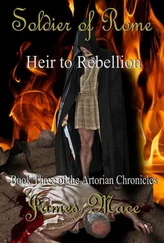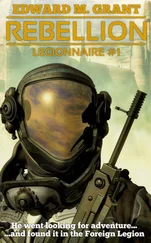Gordon Ryan - State of Rebellion
Здесь есть возможность читать онлайн «Gordon Ryan - State of Rebellion» весь текст электронной книги совершенно бесплатно (целиком полную версию без сокращений). В некоторых случаях можно слушать аудио, скачать через торрент в формате fb2 и присутствует краткое содержание. Жанр: Триллер, на английском языке. Описание произведения, (предисловие) а так же отзывы посетителей доступны на портале библиотеки ЛибКат.
- Название:State of Rebellion
- Автор:
- Жанр:
- Год:неизвестен
- ISBN:нет данных
- Рейтинг книги:4 / 5. Голосов: 1
-
Избранное:Добавить в избранное
- Отзывы:
-
Ваша оценка:
- 80
- 1
- 2
- 3
- 4
- 5
State of Rebellion: краткое содержание, описание и аннотация
Предлагаем к чтению аннотацию, описание, краткое содержание или предисловие (зависит от того, что написал сам автор книги «State of Rebellion»). Если вы не нашли необходимую информацию о книге — напишите в комментариях, мы постараемся отыскать её.
State of Rebellion — читать онлайн бесплатно полную книгу (весь текст) целиком
Ниже представлен текст книги, разбитый по страницам. Система сохранения места последней прочитанной страницы, позволяет с удобством читать онлайн бесплатно книгу «State of Rebellion», без необходимости каждый раз заново искать на чём Вы остановились. Поставьте закладку, и сможете в любой момент перейти на страницу, на которой закончили чтение.
Интервал:
Закладка:
Unprepared for such a broad declaration, Ms. Shipley was momentarily taken aback and mumbled something unintelligible, which neither Governor Dewhirst nor the television microphones could pick up.
“Excuse me, Ms. Shipley?”
“I’m sorry, Governor, I. . I believe I would like the marshals to present you with the president’s instructions and to give you some time to confer, as I obviously need to do,” she added, “and then perhaps we can determine our respective positions.”
The lead marshal came forward and presented Governor Dewhirst with a large, manila envelope, stepping back as Ms. Shipley turned to leave.
The two-hundred-thirty-year-old controversy regarding who fired the first revolutionary “shots heard round the world” at Concord and Lexington has never been fully determined to both sides’ satisfaction. Both British and American participants have blamed the other. The Battle of Capital Mall provided the same confusion. Precisely where the first shot came from was later debated ad nauseum , with both sides claiming the other had fired first.
Both sides were wrong.
The first bullet struck the mass of microphones that had been placed on a riser in front of where the governor stood. General Del Valle immediately recognized the sound and grabbed Governor Dewhirst from behind, shoving him toward the rear. The second shot, seemingly from a similar quarter, struck Del Valle in the back of the neck, instantly dropping him. Governor Dewhirst stumbled to his knees, an action that saved his life. The third shot passed over his head, striking a State Military Reserve corporal standing on the steps of the Capitol, killing him instantly.
Equally confusing were the return shots from a distant location. Their fusillade was fired into the massed 82 ndairborne troops who were unlucky enough to have been assigned to the western sector of the blockade. Almost as a body, they dropped prone into the street, behind cars or trees, and assumed a position to return fire. Not having received an order to engage the enemy, their fire discipline held.
In the ensuing investigation, Colonel Harman, who had given specific orders not to fire unless directed, was able to determine that it was the ragged and undisciplined outburst from the SMR that caused the most damage on this fateful morning. Despite their restraint in returning fire, multiple casualties were inflicted upon the 82 nd. SMR forces suffered one dead trooper, plus General Del Valle’s neck wound. The disparity of injuries gave the appearance that the battle was a lopsided firefight, with the SMR the clear victor. The only bright side to the disastrous event was that no civilian casualties occurred.
Confusion among reporters, civilian bystanders, and legislative staffers was rampant. The only group for whom confusion was not a problem was the six-man action squad from the Shasta Brigade, assembled by Jean Wolff and Commander Jackson Shaw. Escape was a simple matter of once again blending in with the troops they impersonated. Five of the brigade squad had fired in the initial volley, quickly merging with nearby troops and feigning confusion at the source of fire. The dozen or so SMR troops who, without orders, had returned fire, did so of their own volition. The lives lost within the 82 ndAirborne, plus the injured, were a direct result of SMR ineptitude and lack of fire discipline. More directly, however, the Shasta Brigade had succeeded in escalating the tenuous situation into a brief, but violent firefight from which emerged no winner.
President William Eastman, Vice President Clarene Prescott, and Chairman of the Joint Chiefs, Air Force General Hezekiah Johnson, sat in the Oval Office, stunned as the drama unfolded before their eyes on large-screen TV.
Eastman was livid. “General Johnson, this is exactly what I did not want to happen! Get those troops out of there now! And I mean now!”
“Mr. President-”
“I said now , General. Better yet, get the commander of that unit on the phone immediately. I’ll speak to him personally.”
“Yes, sir, but I recommend that-”
Eastman stood, his voice assuming a lower tone, but his face strained, and the veins in his neck distended. “General, if you can’t or won’t carry out my orders, I’ll find someone who will. Am I making myself clear?”
“Yes, sir.”
Within three minutes, Major General David Chidester was on the line.
“General, this is William Eastman, president of the United States. Do you recognize my voice, and are you willing to recognize my authority?”
“Yes, sir. I recognize your voice and am under your authority, Mr. President.”
“Good. I want you to approach the commander of the California troops, whatever they’re calling themselves, and personally advise him that you are immediately commencing withdrawal of your troops. Do you understand?”
“Yes, sir.”
“General,” Eastman said, his voice softening, “how many casualties do you have?”
“Mr. President, all reports are not in yet, but I am advised of six dead and eight wounded.” He paused and added, “But I only have reports from the 82 nd, Mr. President.”
“I understand, General. Get those wounded troops immediate care.” Eastman paused. “General Chidester, I do understand. I know you’ll take care of your troops, and I don’t mean to interfere with that aspect of your duties, but I will not preside over the opening shots of the Second Civil War. Do I make myself clear?”
“Perfectly clear, Mr. President. I’ll act immediately.”
“Thank you. . and General,” Eastman again paused, “my sincere condolences on the loss of those in your command.”
“Thank you, Mr. President.”
Four hours later, the only remaining semblances of military activity were the deep gouges in the lawn of the Capitol, left by M1A1 Abrams main battle tanks, unused in the melee other than to protect certain members of the regular forces who had remained inside during the firefight and reporters who had taken cover behind their bulk.
General Chidester had personally explained the president’s orders to Colonel Harman, who had assumed command in General Del Valle’s absence. As quickly as it had been lost, order was restored.
General Robert Del Valle had undergone surgery and was expected to recover. General Chidester’s evening visit to Del Valle’s hospital room went unnoticed until days later, when hospital staff remembered to advise Del Valle of the courtesy shown by his counterpart, with whom he had earned the honor of commanding what the press had dubbed the Battle of Capital Mall.
Casualties among the 82 ndAirborne included seven dead and eleven wounded, two requiring medical retirement. California’s casualties totaled one dead, Corporal Anthony Gambino, and one wounded-Major General Robert Del Valle.
The only positive event of the day was the eventual result-that of returning control of the situation to political leadership intent on diplomacy as opposed to the option of military action.
Having watched the developments throughout most of the morning, John Henry Franklin focused primarily on Governor Dewhirst’s statement to Ms. Shipley. He picked up his telephone, pressed a speed dial number, and waited.
“ Si ,” a male voice answered.
“General Valdez. John Henry here. Have you been watching the events of the day?”
“Absolutely.”
“Good. Now it’s time for your visit to President Jalisco. I think he’ll need to appoint a new ambassador, don’t you think?”
“I do. An ambassador from the Republic of Mexico to the new Republic of California, I think.”
“It’s time for phase two, Emil.”
“Good, John Henry. Very good.”
Jack’s funeral was a small family affair. But the memorial earlier in the day had been anything but small. The moment Governor Dewhirst had learned of Jack’s death, and knowing that Daniel Rawlings would be involved in the gubernatorial strategy session prior to the press conference and unable to assist his mother, Dewhirst had assigned two of his staff to assist Mrs. Rawlings in the preparations. Even so, immediately following the press conference, the governor had told Dan to go home and attend to family business. Dan learned of the governor’s thoughtful action from his mother over the weekend.
Читать дальшеИнтервал:
Закладка:
Похожие книги на «State of Rebellion»
Представляем Вашему вниманию похожие книги на «State of Rebellion» списком для выбора. Мы отобрали схожую по названию и смыслу литературу в надежде предоставить читателям больше вариантов отыскать новые, интересные, ещё непрочитанные произведения.
Обсуждение, отзывы о книге «State of Rebellion» и просто собственные мнения читателей. Оставьте ваши комментарии, напишите, что Вы думаете о произведении, его смысле или главных героях. Укажите что конкретно понравилось, а что нет, и почему Вы так считаете.












